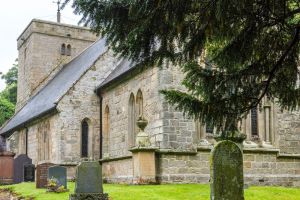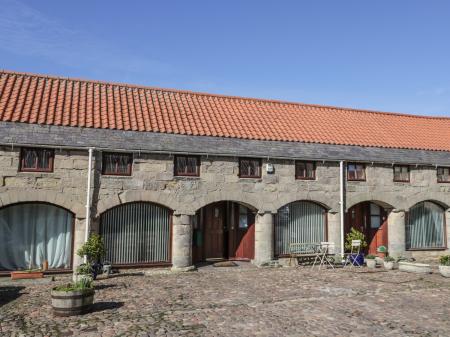
The waterfall is a popular spot for picnics. Red squirrels can be seen on the forest floor near Linhope Spout, especially in the spring and autumn when there are fewer leaves to conceal them.
The village lies just within the Northumberland National Park, and both red squirrels and (occasional) red kites can be spotted locally. Dippers, wagtail, oystercatchers and heron are often seen by the river. This area of the Park is designated as part of the Northumberland International Dark Sky Park, offering the chance to observe the heavens without nearby light sources.
There are several popular walks in the area, including 'The Innway', a classic pub walk stretching from Northumberland to Cumbria.
The parish church of St Michael and All Angels dates to the 12th century, though it probably stands on the site of a much older pre-Norman church. The tower may have been strengthened to serve as a stronghold against Scottish raids in the late medieval period.
Perhaps the most famous rector of Ingram was Walter Reginald, who served as Chaplain to Edward I and rose to become Archbishop of Canterbury and Lord Chancellor of England. One of the most intriguing historic features inside the church is a mysterious fragment of a medieval carving showing two angels at the foot of a robed cleric.
Near the church are remnants of a fortified tower built as a residence for the parish priest.
Opposite the church is the Valley Cottage Cafe, which also serves as the National Park Information Point and hosts an exhibition on the archaeology of the Breamish Valley. Here you can find details on several popular walks including trails to the nearby hillforts at Brough Law and Cochrane Pike, where you can see the remains of four stone huts.
The Breamish Valley is a treasure-trove for archaeologists; the area is rich with prehistoric sites including Bronze Age burial chambers, Iron Age hillforts, ancient farmsteads, medieval field systems, and deserted villages. Near Ingram is the prehistoric settlement of Greaves Ash. The valley was the traditional route taken by packhorses transporting salt from the Northumberland coast to the Scottish border region.
There is a free car park at the edge of the village, beside Ingram Bridge. There is another car park further up the valley at Bulby's Wood.
We can highly recommend the walk to Linhope Spout. The walk is roughly 1.5 miles long (plus the return journey) and will take between 90 and 120 minutes. The waterfall is fabulous, but please wear good waterproof footwear.






 We've 'tagged' this attraction information to help you find related historic attractions and learn more about major time periods mentioned.
We've 'tagged' this attraction information to help you find related historic attractions and learn more about major time periods mentioned.




